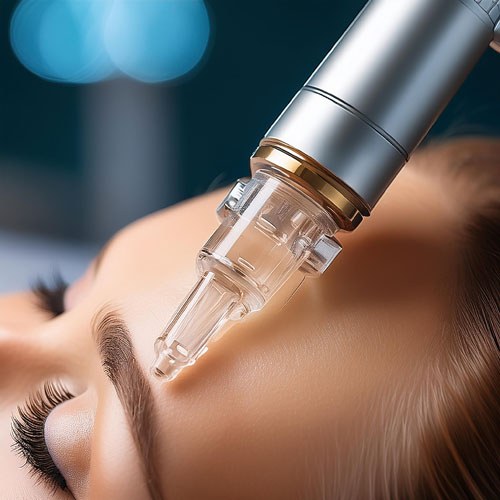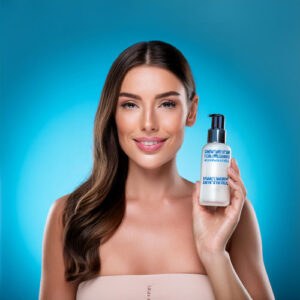
About BB Glow Treatment – Updated 2024
Semi-permanent foundation – BB Glow Can you imagine waking up every morning with a perfectly even skin without any red spots or other imperfections? What

Feel worried that you skin looks tired and unhealthy? The two quickest and effective solutions to that problem is mesotherapy and biorevitalisation. Products used for these treatments include healing components: vitamins, amino acids, herbal extracts, oligopeptides and plenty of others. These are the so-called “beauty cocktails.” Due to the rich composition of each product, the procedures have a healing effect on the skin, stimulate metabolic processes and allow you to improve various skin defects.
Biorevitalisation specialises in fighting age-related skin problems for over forty’s. Unlike mesotherapy, it often includes administrating hyaluronic acid of non-animal origin. Since this type of HA is not able to integrate into the structure of the skin, the effect from the treatment persists for as long as the drug is in the tissues but it isn’t visible straight away.
The effectiveness of mesotherapy is achieved by increasing the number of procedures. Within 2-3 days after biorevitalisation, small nodules may remain on the face, with mesotherapy these won’t be seen. Both procedures are similar in their contraindications. After just a few sessions, your skin will acquire a healthy color, nourished with helpful nutrients.
It is very important to consider that only a professional cosmetologist can determine what procedure is needed.
Mesotherapy is a treatment that involves the introduction of nutritious cocktails into the middle layer of the dermis.
Method effectiveness:
Michel Pistor can rightfully be considered the founder of mesotherapy. Since 1952, this method has been actively used in medical practice, and in 1987, mesotherapy was legalized by the French Medical Academy.
The right meso-cocktail:
When choosing a cocktail for injection, the cosmetologist takes into account the nature of the patient’s problem.
Mesococtails may include:
hyaluronic acid, antioxidants, trace elements, vitamins, plant extracts, organic acids, and amino acids.

• Acne
• Hair loss
• Fading, dull skin
• Hyperpigmentation
• For the prevention and treatment of skin aging
• Dark circles under eyes
• Treatment of cellulite, scars and stretch marks
• Hyperpigmentation
Contraindications to mesotherapy:
It is strictly recommended to avoid the treatment if have any of the following:
• diabetes;
• pregnancy and lactation;
• oncology;
• epilepsy
• allergy to the ingredients;
• the presence of an inflammatory process in the treatment area;
• taking anticoagulant antiplatelet agents;
• clotting pathology;
• chronic diseases in the acute stage;
• predisposition to keloid scars;
• renal and liver failure.
Mesotherapy can be carried out either with or without local anesthesia. This is determined depending on the injection zone and the threshold of pain sensitivity of the patient. In modern injection medicine, two methods of introducing a mesococktail are distinguished: manual and using a meso-injector. The duration of one session on average takes from 15 to 30 minutes.
What about biorevitalization?
This is one of the methods of mesotherapy, the only difference is that during biorevitalization only hyaluronic acid is introduced into a certain layer of the skin.
This component plays an important role in the process of facial rejuvenation. Penetrating into certain layers of the skin, hyaluronic acid promotes the production of collagen and elastin, which are responsible for skin firmness. Thanks to hydration, small wrinkles are smoothed out, the skin becomes smooth and radiant.
Hyaluronic acid is synthesized in human tissues, therefore it is successfully used in cosmetology. The concentration of this component may be different: within 1.5% -1.8%. After administration to the skin, it remains in the tissues for 10-14 days. This period is enough for hyaluronic acid to be filled with water, improve metabolic processes and blood circulation, and activate fibroblasts. As a result, it is capable of being broken down by its own enzyme, hyalurinidase.

Semi-permanent foundation – BB Glow Can you imagine waking up every morning with a perfectly even skin without any red spots or other imperfections? What

Everything you need to know about Hyaluronic Acid. Are you aware of the main reason of early aging and wrinkles? Let’s talk about it